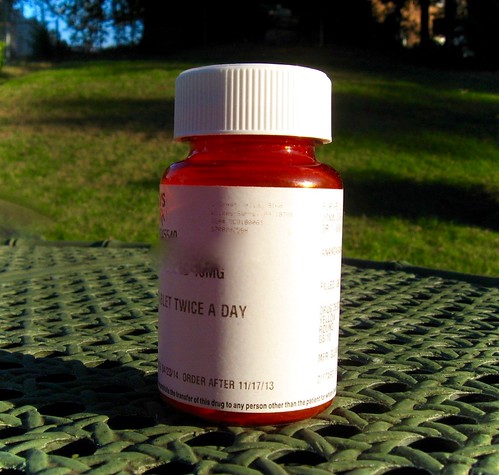
We know that antibiotics are those miracle drugs Alexander Fleming stumbled upon in the 1920’s when his lab was left untidy. Since that happy accident, scientists have identified additional naturally-occurring antibiotics and developed synthetic drugs to add to our arsenal to combat bacterial infections.
So we’ve had bacteria, through their need to survive, learning how to develop resistance to naturally occurring antibiotics in the environment for eons; long before we started purposefully adding more antibiotics to the mix. So though we need antibiotics, it would be really nice if we could find ways to rely on them less.
How about preventing disease to start? Preventing disease could take the form of finding ways to enhance the immune system or identifying better strategies to target animals at risk, such as improving vaccines. We can also look for other types of treatments to address disease.
That’s just what the scientists at USDA’s Agricultural Research Service (ARS) and National Institute of Food and Agriculture (NIFA) do. ARS conducts innovative research and NIFA awards grant funds to ensure that groundbreaking discoveries in agriculture-related sciences and technologies reach the people who can put them into practice. For example:
- How can we improve immunity?
- We could enhance a pig’s immune response during times of peak disease incidence. ARS scientists are evaluating the use of immune-derived substances that supplement animals’ innate defense mechanisms. Read more here: https://www.ars.usda.gov/research/publications/publication/?seqNo115=323915.
- NK-lysin is an antimicrobial peptide/protein that is an important part of the inborn immune system. A NIFA Agriculture and Food Research Initiative (AFRI) - funded study, found these proteins can kill both Gram-positive and Gram-negative bacteria. Read more here: http://www.pnas.org/content/early/2015/12/09/1519374113.abstract
- How can we make the bacteria sick like they make us sick? How about viruses that infect the bacteria? ARS researchers are exploring the use of destructive enzymes from viruses that infect bacteria such as those causing udder infections in dairy cattle, thereby reducing the use of antibiotics in dairy cattle. Read more here: http://www.ars.usda.gov/pandp/people/people.htm?personid=32780.
- Haven’t vaccines been around forever? What more can we learn?
- We still struggle with understanding all of the ways we can enhance an animal’s adaptive immune response to a vaccine so that its ability to fight disease improves. ARS scientists are improving their understanding of stimulating multiple arms of the immune system to increase efficacy, safety, and cost-effectiveness. Read more here: https://www.ars.usda.gov/research/publications/publication/?seqNo115=313141.
- And why stop at conventional vaccines? Why not nanovaccines? NIFA is funding University of Wisconsin-Madison researchers to evaluate nanoparticles to fight respiratory disease in poultry where there is no effective vaccine because of the many strains of circulating virus. Success could serve as a model for addressing other animal diseases. Read more here: http://www.agupdate.com/agriview/business/nanotechnology-may-save-poultry/article_dc5ff4c0-022b-5c37-9da7-438af05e6060.html .
- What else can we do to improve preventive management practices beyond vaccine protocols? Well, NIFA asked the country’s scientists just that question. As part of a five-year AFRI Food Security Challenge award initiated in 2013, scientists focus on extension-driven solutions to reduce mastitis on Southeast U.S. dairy farms, thus reducing the need for antibiotics and improving the quality of milk. Read more here: http://portal.nifa.usda.gov/web/crisprojectpages/0231797-southeast-quality-milk-initiative-controlling-mastitis-and-improving-milk-quality.html
As USDA scientists continue to work with their partners to look for ways to preserve the efficacy of medically important antibiotics that address the most critical needs for human and animal health with a focus on public health outcomes, USDA scientists look forward to working with their partners to concurrently find ways, through sound science, to address agricultural productivity, sustainability, and resilience.
For more information on how USDA is trying to move beyond that decades-old happy accident of antibiotic discovery to intentional innovation for alternative strategies to address disease, see:
1) USDA AMR website: http://www.usda.gov/wps/portal/usda/usdahome?contentidonly=true&contentid=antimicrobial.html
2) NIFA funded research: https://nifa.usda.gov/antimicrobial-resistance
3) ARS resources:



